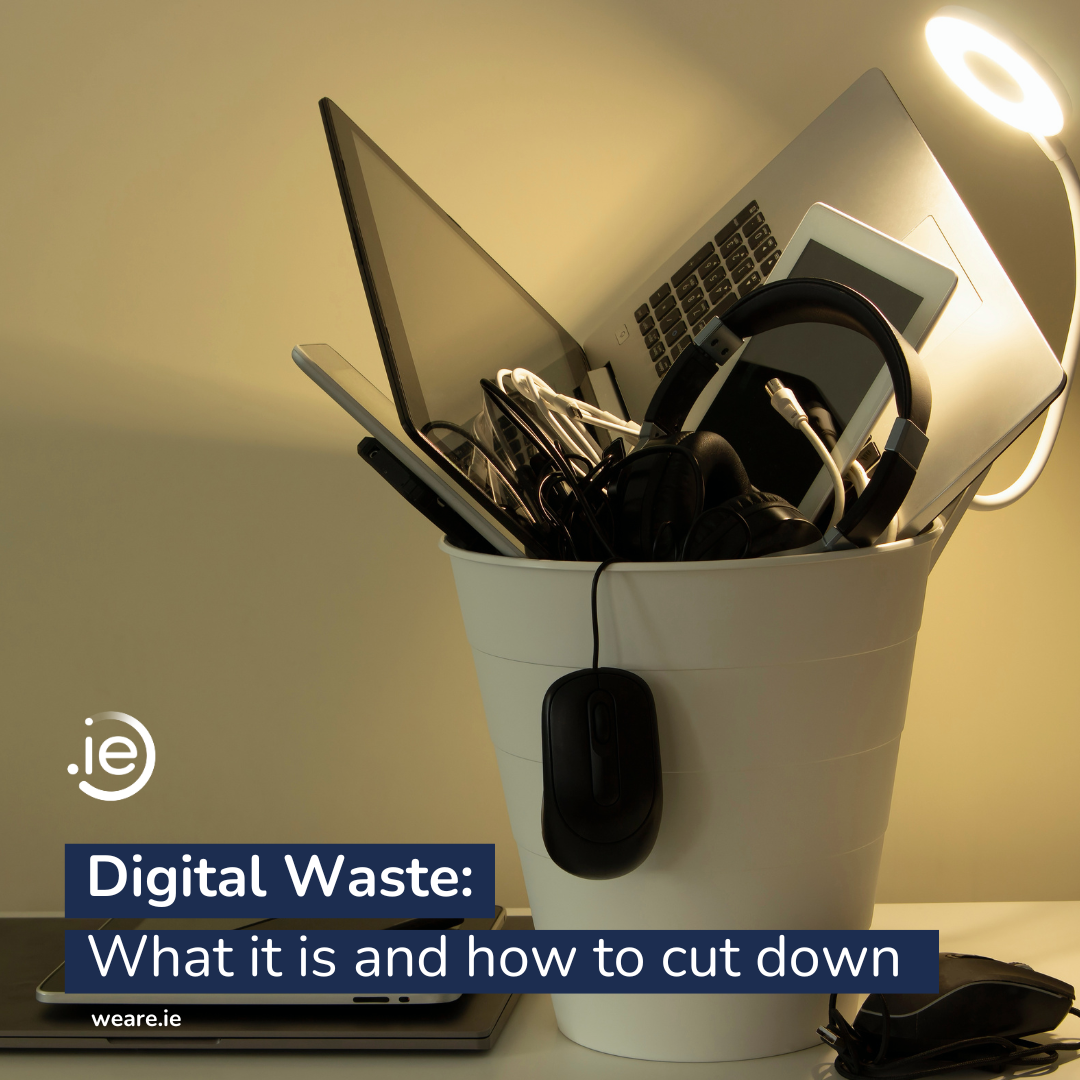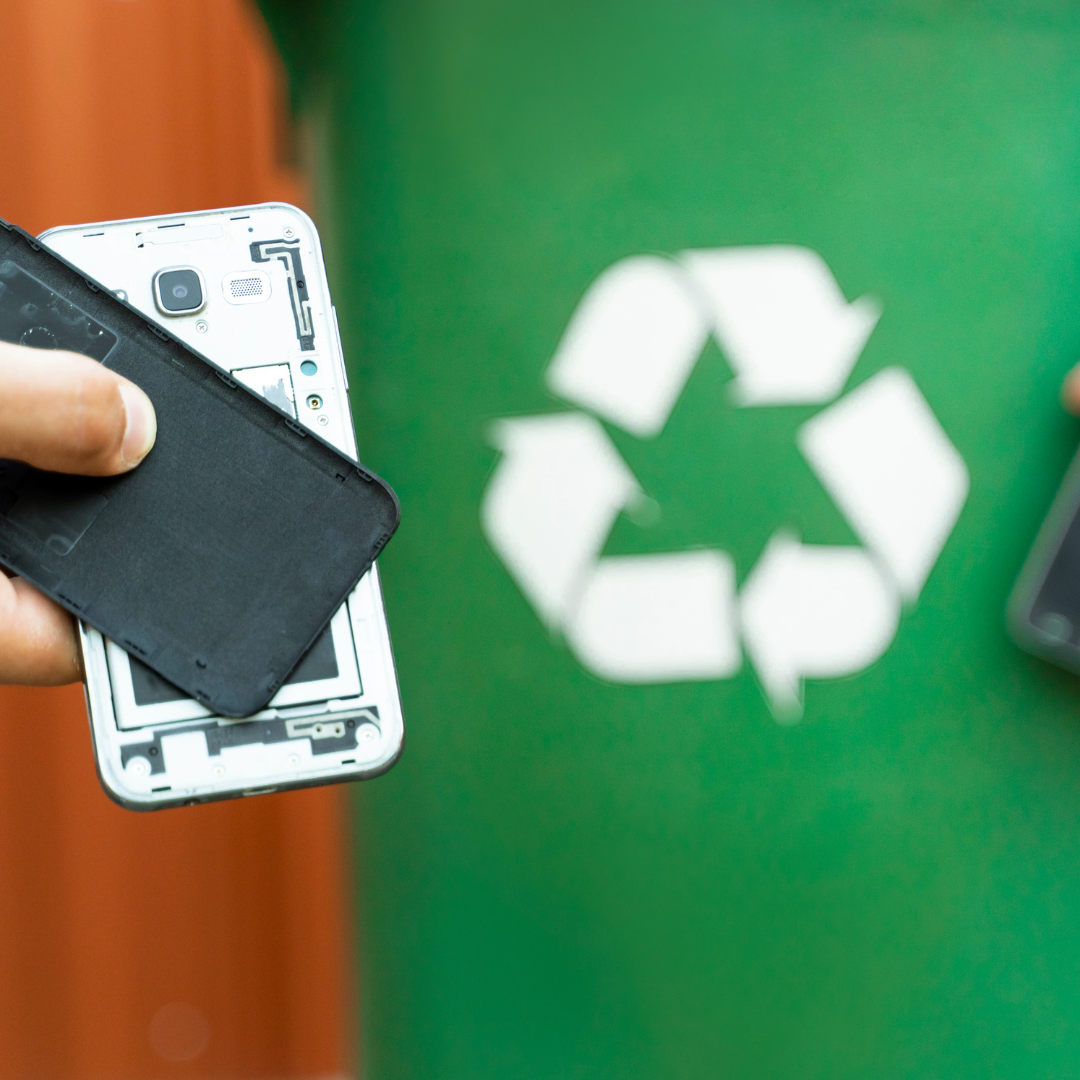Blog | Digital Waste: What it is and how to cut down
What exactly is digital waste?
Put simply, digital waste is any stored data that doesn’t serve a useful purpose.
Examples of digital waste can range from internet downloads, and long-forgotten photos, to archived email messages and outdated marketing slide decks and spreadsheets.
Storing all this excess data directly contributes to CO2 emissions that harm the planet. We’ll explain how in a moment.
Of course – it would be easy to assume digital waste and electronic waste (or “e-waste”) are the same.
With electronic waste, we tend to think about the collection of old smartphones, obsolete laptops, cameras, hard drives, and other unwanted technology that clutter up your home or business.
Digital waste, on the other hand, is a newer concept. Instead of physical devices, digital waste has to do with excessive, unneeded cloud-based data.

Why does digital waste matter?
Cloud-based storage and computing has become the norm – whether for personal use or by the world’s largest companies. In fact, as of 2023, a staggering 60% of all corporate data is stored in the cloud.
Google Drive is by far the most popular cloud storage provider, having exceeded 1 billion active users back in 2018. More than 65 per cent of people surveyed by GoodFirms said they used the cloud as their primary data storage method, and more than 50 per cent subscribed to at least three different cloud services.
However, the issue with cloud storage is that we’re not properly managing all our data, which is creating petabytes upon petabytes (thousands of terabytes) of what experts have termed, “ROT” (redundant, obsolete or trivial) data.
This ROT is contributing to digital waste, which can have very tangible effects on the environment – and your business.
Cloud storage comes with a physical and energy-consuming footprint. Data is processed and stored in massive data centres across the globe that are continuously online. These buildings are filled with rows upon rows of hard drive-filled server racks, along with cooling systems that require enormous amounts of electricity to run.
Digital waste is a very real problem because the electricity required to run the world’s data centres results in CO2 emissions. As global demand for cloud storage increases, so does the need data centres and energy to power them. Statista estimates that by 2025 the amount of globally-produced digital data will be 181 zettabytes (or 181 trillion gigabytes).
Now consider this: Over half the data being collected and stored by the world’s businesses right now could be considered redundant, obsolete or trivial (ROT). That is simply a massive environmental footprint being generated by unneeded data.
ROT data can also have a negative impact on your business:
- Having gigabytes of old or useless files cluttering up your cloud drive makes it difficult for you and your employees to find what they need and be efficient. You also run the risk of employees accidentally using or posting old, outdated information.
- You could risk violating privacy and data compliance laws by hanging onto files well after the mandated retention period has passed.
- Larger amounts of cloud storage are costly! ROT data is a major contributor to why the vast majority of organisations fail to stay within their cloud storage budgets year after year.
What can be done to help reduce digital waste?
Perform regular data audits.
There is no substitute for taking the time to go through your cloud drives, then reviewing and removing any irrelevant or unneeded files. Think of it like cleaning out a virtual filing cabinet and freeing up space. Here are three ways to make the most of your data audit process:
- Create a proper file naming or classification system to help you better understand what’s taking up your cloud storage space and whether it is still needed.
- Use the ROT (redundant, obsolete or trivial) method to sort through your files. Ask yourself: Is this file unnecessarily backed up or duplicated multiple times? File duplication detection software, like Fast Duplicate File Finder, can help you find redundant files across all your cloud drives. Has this file since been replaced with a more up-to-date version? Does this file have any immediate impact or usefulness to my business?

3. Establish a single place where you keep the most current (and correct) “master” versions of your most important files. This can help you root out and delete outdated copies that may only cause confusion.
4. Don’t forget to apply this same thought process to your personal files, household documents, email records and other digital data.
Create a carbon-neutral website
Yes, having an attractive, functional website is a must-have for small businesses, but all the data processing and storage involved in making your website function has an emissions impact.
The average website produces 0.8 grams of CO2 per page view. For a website with 10,000 monthly views, that’s 102 kilos of CO2 emissions per year! So, how do you go about creating a carbon neutral website?
Start with slimming down your website’s design.
- Use more efficient impact formats – like SVG, WEBP over bulkier formats like JPG and PNG.
- Don’t use auto-play video. Instead, host your video on external platforms like Vimeo or YouTube.
- Focus on making your SEO (search engine optimisation) as strong as possible. This can help you reach and attract the users who are most likely to visit and convert on your site.
- Keep your overall website design as straightforward an uncluttered as possible.
Switch to a web hosting provider that uses renewable energy. A growing number of providers are now using greener sources – like wind and solar – to power their operations.
Conclusion
The issue of digital waste is truly global in scale, but you can do your part to avoid adding to the overall problem.
It starts with being aware of the impact your digital activities and habits have, then being far more conscientious and discerning about the kinds of data you store.
From there, regular digital housekeeping can help ensure you and your business don’t end up buried under a mound of digital waste that not only contributes to emissions, but clutters up your own day to day processes.
Remember: Every byte saved truly can truly make a difference.
Access all our blogs here

As the trusted national registry for over 330,000 domain names, .ie protects Ireland’s unique online identity and empowers people, communities and businesses connected with Ireland to thrive and prosper online. A positive driving force in Ireland’s digital economy, .ie serves as a profit for good organisation with a mission to elevate Ireland’s digital identity by providing the Irish online community with a trusted, resilient and accessible .ie internet domain. Working with strategic partners, .ie promotes and invests in digital adoption and advocacy initiatives – including the .ie Digital Town Blueprint and Awards for local towns, communities and SMEs. We provide data analytics and dashboards built by the .ie Xavier team to help with data-led decision-making for the public, registrars and policymakers. The organisation is designated as an Operator of Essential Services (OES) under the EU Cyber directive, and we fulfil a pivotal role in maintaining the security and reliability of part of Ireland’s digital infrastructure.